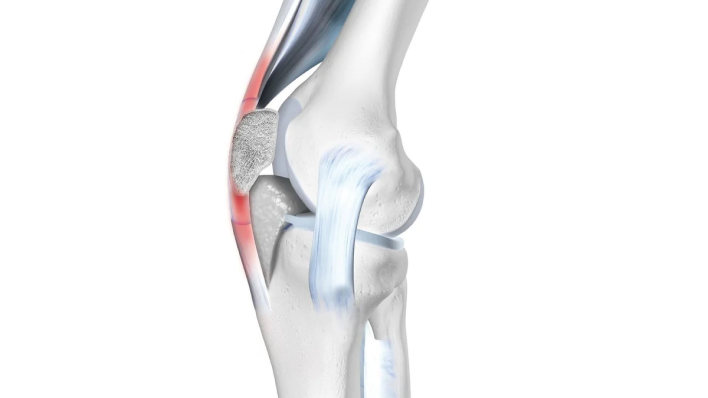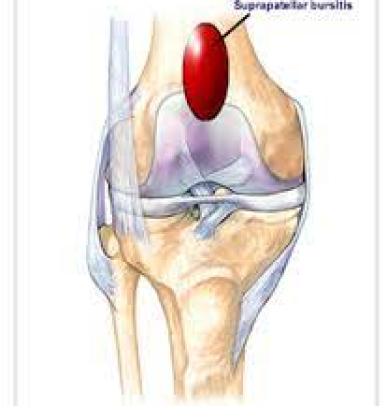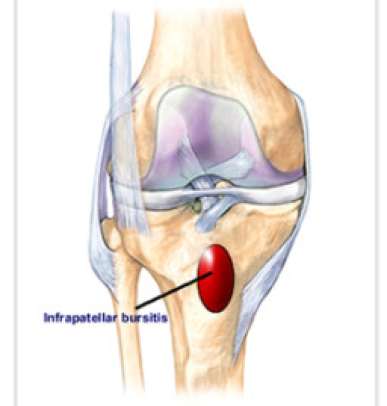Patellar Tendinitis

Patellar tendinitis is an overuse injury causing pain in the tendon connecting the kneecap to the shinbone. This condition primarily affects athletes and active individuals, leading to discomfort and reduced mobility.
At Tarabichi Joint Care, we specialize in diagnosing and treating patellar tendinitis, commonly known as jumper’s knee. This webpage will explore the nature of patellar tendinitis, its symptoms, causes, and effective treatment options.
What is Patellar Tendinitis?
Patellar tendinitis is one of the overuse injuries that bring about inflammation at the site of the patellar tendon connecting the kneecap patella with the shinbone tibia.
This tendon is very sensitive and very much involved in the mechanics of the knee while performing any of the activities that involve jumping, running, or quick change of direction. The condition is often seen in sports that require explosive movements, such as basketball, soccer, and volleyball.
Anatomy
Causes of Patellar Tendinitis
Repetitive Strain: Patellar tendinitis is primarily caused by repetitive stress on the patellar tendon, often due to overuse during sports or physical activities.
Micro-tears: Activities involving frequent jumping or sprinting can lead to tiny tears in the tendon. Continuous strain without adequate recovery prevents these tears from healing, resulting in pain and weakness.
Gradual Damage: The injury typically develops over time rather than from a single incident.
Key Factors Contributing to Patellar Tendinitis
Sudden Increase in Activity: It is likely that an instantaneous rise in the level of intensity or frequency of exercising can be too severe for the tendon.
Insufficient Rest: Not allowing adequate recovery time between sessions can hinder healing. Gradually resuming activities is essential to prevent exacerbating the injury.
Types

Infrapatellar Tendinitis
Involves pain in the lower part of the patellar tendon, near the tibia.

Suprapatellar Tendinitis
Involves pain above the kneecap, affecting the upper portion of the tendon.
When is the Treatment Recommended?
Candidates Eligible
- Experience chronic knee pain and swelling due to tendon strain.
- Have difficulty performing daily activities or participating in sports.
- Have not found relief from conservative treatment approaches, including rest and physical therapy.
Symptoms of Patellar Tendinitis
Common symptoms of jumper’s knee may vary between individuals but typically include:
- Pain and Tenderness
- Swelling
- Pain with Activity.
- Leg Movement Pain.
- Tenderness
Diagnosis of Patellar Tendinitis
At Tarabichi Joint Care, our experienced medical team employs a thorough approach to diagnose patellar tendinitis.
This includes a detailed physical examination, assessment of your past medical reports, and imaging tests, such as MRI, to evaluate the condition of the tendon and rule out other potential issues.
Treatment Options for Patellar Tendinitis
Non-Surgical Treatments
For most cases, patellar tendinitis can be effectively managed through conservative treatment options, including:- Rest and Activity Modification: Reducing or temporarily halting activities exacerbating pain can help the tendon heal.
- Ice Therapy: On the affected area, ice application reduces swelling and makes the patient feel better.
- Physical Therapy: A tailored rehabilitation program focusing on strengthening the quadriceps and improving flexibility can aid recovery. Physical therapists may also teach proper jumping and landing techniques to prevent recurrence.
- Bracing: A knee brace may support and reduce strain on the patellar tendon during activities.
- Medications: Non-steroidal anti-inflammatory drugs (NSAIDs) can help manage pain and inflammation.
- Lontophoresis: Topical corticosteroid drug is applied to the painful site with the aid of a tiny device that uses an electric current to facilitate the drug to be absorbed by your skin.
- Corticosteroid injection: Under ultrasonography guidance, corticosteroid injection is administered directly into the sheath surrounding the affected patellar tendon. This will give relief and enable one to do strength exercises without pain.
Surgery
- Tendon Repair: This is commonly performed if the tear is severe and needs surgical repair to ensure that parts of the tissue remain intact.
- Minimal Pain Knee Surgery: Advanced techniques may be employed to minimize pain and recovery time while addressing the underlying issue.
- Infection: If septic bursitis is diagnosed, surgery is necessary to prevent the infection from spreading.
How to Get Rid of Patellar Tendinitis?
Effective treatment of patellar tendinitis may involve rest, physical therapy, and proper technique adjustments. Regularly consulting with a knee surgeon in Dubai can help ensure you are on the right path to recovery.
Why Choose Tarabichi Joint Care for Knee Joint Treatment in Dubai?
At Tarabichi Joint Care, we commit ourselves to providing you personalized care tailored exactly to your needs. We understand that life can be discouraging when dealing with patellar tendinitis, but our commitment to you is in getting you back on your feet and moving.
If you are struggling with symptoms of jumper’s knee or looking for effective knee joint treatment in Dubai, don’t hesitate to contact us. Contact us. Please book your appointment with our renowned knee specialists and take the first step toward recovery.
FAQ’S
Treatment for patellar tendinitis may include non-surgical methods such as physical therapy, ice, and anti-inflammatory medications. In cases where these approaches fail, surgical options may include tendon repair or debridement.
While conservative treatments are typically safe, complications like infection (in septic bursitis) or chronic pain may arise. In rare cases, surgery can lead to infection or recurrence of bursitis.
Patients should prepare the following documents:
- A referral from their primary care physician or orthopedic specialist.
- Previous medical records related to knee health.
- Imaging studies (like X-rays or MRIs) to assess the condition of the patellar tendon.
- A list of current medications and any known allergies.
